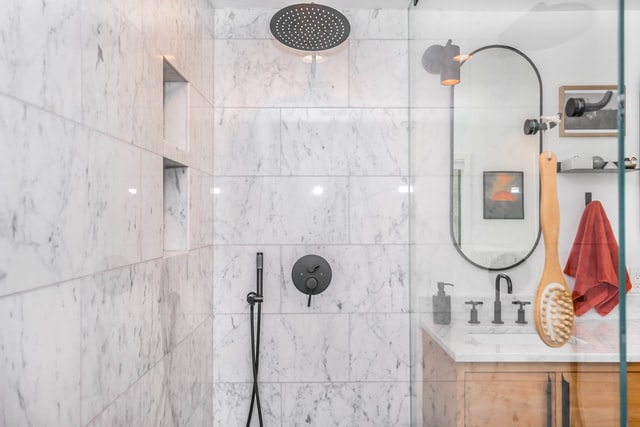How to remove a stripped screw from shower faucet
Screws are used to hold parts of the faucet together, whether in the kitchen, bathroom or shower. A set screw secures the faucet handle to the base in some single handled faucets. More screws fastening the faucet cartridge are frequently found after removing the handle. Screws secure the handles to the stems of two handled faucets, keeping the faucet shut. When the head of a faucet screw is stripped, the screwdriver is unable to grab the screw and remove it from the faucet so that repairs can be performed. Two different types of screws are included with the shower faucet. To remove a stripped set screw, you must be familiar with the intricacies of these screws.
Allen Head
This tool has a threaded end and a tiny head. Socket head cap screw is its alternative name. For fastening and loosening activities, the head is cylindrical and accommodates an Allen wrench.
Phillips Screws
Phillips screws have a cross-shaped head. It comes in a variety of sizes and includes a Phillips screwdriver. The screw extractor must be used with caution since the set screws are soft. If not, the faucet handle may be broken.
- Drill Preparation
A drill manufactured of cobalt will be required. To cut a hole in the screw, you’ll need to use a drill bit made of cobalt and a drilling machine. Examine the type of screw set now. Next, select the appropriate drill bit size. It should snugly fit over the stripped screw without causing the gap to grow.
- Drill A Hole
Place the drill bit on the screw head with care now. Drill through the handle with the drill machine until you reach the bottom of the Allen or Phillips head screw. Carefully remove the drill bit once it has reached the screw’s bottom.
- Removing the Screw Head
To remove the screw head, you’ll have to drill it out. Change the drill bit and replace it with one that is appropriate for the screw head size. To access the internal diameter of the faucet handles, carefully drill through the screw. Remove the drill bit without harming the faucet handle once you’ve reached the inside of it.
- The Screw Extractor is inserted
From the various extractor set package, select the correct-sized screw extractor. It should be inserted into the set screw’s drilled hole. The screw extractor may occasionally be somewhat larger than the screw head’s drilled hole. Use the drill bit and the machine to gently deepen the hole at this point. Then, right in the screw head hole, insert the screw extractor correctly.
- Removing the Screw
To connect the screw extractor to the adjustable wrench, you’ll need one. You can also use locking pliers instead of the adjustable wrench if you don’t have one. Combine the screw extractor and the adjustable wrench. Tighten the wrench to the proper tightness and rotate it counterclockwise. Carefully remove the stripped screw from the faucet handle.
Pliers may be used to remove it
Remember that this procedure will only work if there is any daylight between the stripped screw’s head and the surface it is secured to. If you don’t see any light, the screw hasn’t been loosened enough, and you’ll have to use another way. If you can see daylight, you can remove the stripped screw with pliers in two steps:
Twist and pull until you get the desired result
This part can differ depending on how deeply the screw is lodged and how badly it has been removed. You should be able to either pull or slowly turn the screw after you have a solid grip on it. Continue to work until the screw is removed from the surface. This strategy may necessitate a little more legwork than others, but it normally works well. As long as the screw can be turned, it should eventually come out of the substance in which it is lodged.
How to Disassemble a Faucet Handle with A Stripped Set-Screw
For this, a cobalt drill bit should be used with a power drill machine. A 14-inch-deep drilled hole is required. Slowly reverse the drill bit to remove it when you’ve finished drilling the hole. Then, using a hammer, tap the screw extractor into the hole. If you use too much force on the extractor, the faucet handle will break.
Without a drill, how do you remove a stripped screw?
When I strip a screw and don’t have a drill on hand, it’s a nightmare. I’ve discovered a few more useful ways to remove a stripped screw that don’t require a drill over the years!
Use a rubber band as a first option
Cover the stripped screw head with a rubber band before slowly inserting the screwdriver into the hole. To allow the screwdriver to turn the head, more friction must be added. Other household objects like a sponge or steel wool can also be used. This may provide you with the extra grip you require to tighten the screw.
Pliers to the rescue in Second Option
Using pliers to remove a screw head that has protruded from its base is a viable option. Turn the screw by firmly gripping the top of the screw head. In this situation, locking pliers may be useful. This is a nice alternative that I’ve gotten to work before. Drilling the appropriate hole with the drill bit is the key to removing a stripped screw from a shower faucet. The extractor can then be simply installed inside it, and the set stripped screw can be removed with the locking pliers set or adjustable wrench. You will need less than 5 minutes to complete the screw removal process. Additionally, while removing the screw from the faucet handle in a kitchen or bathroom, wear gloves to protect your hands from any accidents.

